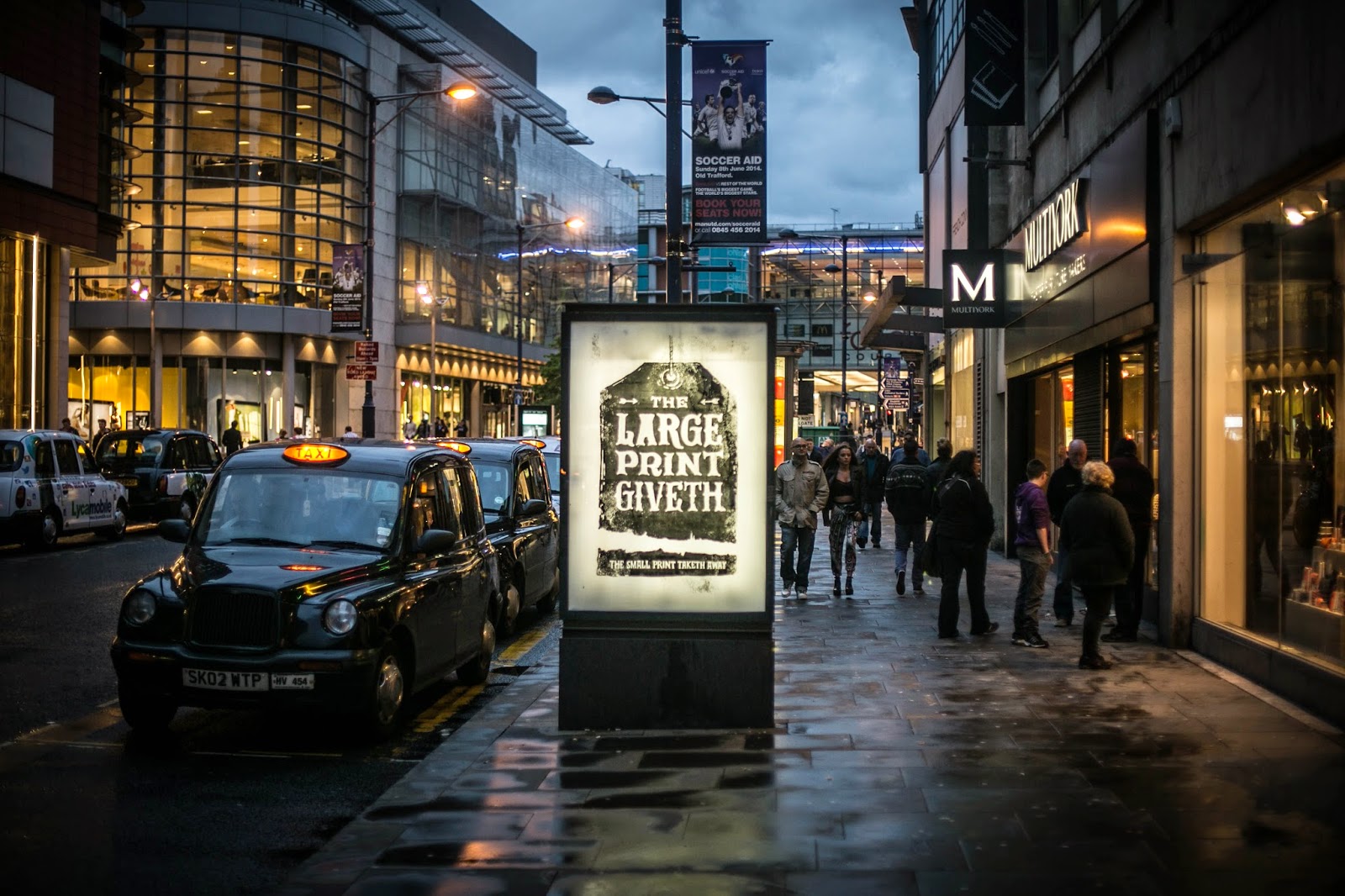John Galt
Activist Post
Art has always been an important method to deliver dissenting messages to the establishment, as well as a rallying point to inform fellow citizens. Modern forms of social commentary can be seen in the work of Anthony Freda and David Dees, whose art graces many alternative media websites. Another version can be seen in a group of village artists in Pakistan who launched a landscape art project to protest drone strikes in their country. There are countless ways to become active and get in the face of oppressors.
 |
| Click image to enlarge |
The Brandalism project has set its sights on the saturated landscape of public-space advertising that is a physical and mental assault on anyone who would like to take a peaceful stroll without being bombarded by misinformation and psy-op strategies.
40 artists recently came to together to spread what they are calling a “subvertising” campaign in the UK. Over 2 days teams in 10 UK cities put up artwork seeking to confront the ad industry and take back the visual landscape. The video below highlights some of that art, and additional information is provided about the background and future direction of this movement.
According to their website:
It is the biggest anti-advertising campaign in world history and it’s getting bigger. Starting in July 2012 with a small team in a van, Brandalism has grown tenfold to include teams in 10 UK cities skilled up in taking back space. The most recent Brandalism Takeover in May 2014 saw the reclamation of over 360 corporate advertising spaces with hand made original art works submitted by 40 international artists. Following on in the guerilla art traditions of the 20th Century and taking inspiration from Agitprop, Situationist and Street Art movements, the Brandalism project sees artists from around the world collaborate to challenge the authority and legitimacy of commercial images within public space and within our culture.
This tradition is indeed growing in popularity and acceptance by citizens, with the UK being a prime site of others who have sought this form of engagement. The following video from Mear One has over 120,000 views and describes the motivation behind the work and the reactions that it engendered throughout the process.
As the most heralded and notorious UK street artist Banksy has stated, the government’s categorization of this type of activity is likely to be vandalism, but is at the very least a “legal gray area.”
While I certainly don’t wish to condone criminal activity, we can’t ignore movements that aim to throw a wrench in the gears of tyranny. Anonymous and the hacktivist groups with whom they are aligned, for example, are largely regarded as justified in their attempts to tear down corrupt and dangerous systems wherever they appear – it could be seen as an act of self-defense. So, too, activist art like Brandalism with the intention to inform and free rather than dumb down and enslave.
 It is at its essence a reclamation of public space that has become infiltrated by all of the trappings of fascism. Advertising is in fact one of the key tools of social engineers who wish to promote the images that define society, whether that be the portrayal of body type, financial success, or political/military directives to “See something, Say something.” As the Brandalism creators rightly point out, the straight advertising of old – the type that is embraced by capitalism; highlighting your product with specific reasons why it is better than the competition – has morphed into messages directed by the State every bit as much as private interests.
It is at its essence a reclamation of public space that has become infiltrated by all of the trappings of fascism. Advertising is in fact one of the key tools of social engineers who wish to promote the images that define society, whether that be the portrayal of body type, financial success, or political/military directives to “See something, Say something.” As the Brandalism creators rightly point out, the straight advertising of old – the type that is embraced by capitalism; highlighting your product with specific reasons why it is better than the competition – has morphed into messages directed by the State every bit as much as private interests.
More than informing us about a product, the advertiser seeks to shape our understanding of what it means to be happy, beautiful, and successful: What it means to fit in and be accepted, what it means to stand out from the crowd and be our own person, and what it means to have fun. Edward Bernays is the man usually acknowledged as the father of modern advertising. His uncle was Sigmund Freud. During the early 20th century, Bernays transplanted Freud’s ideas about the subliminal drives which motivated human behaviour and applied them to the task of selling people things: selling people films, cigarettes, and even selling people the case for going off to die in battle overseas.
As well as a peddler of goods, Bernays served the American governments propaganda efforts during the First World War. Deeply suspicious of mass democracy, he felt the public mind had to be guided for its own good. Mass consumption was the tonic, providing not only a safe outlet for the dangerous emotional energies of the populace, but a vital boost to industry. Economic growth is the fundamental aim to which our societies have been engineered, and for the economy to produce more, we need to consume more.
Paul Mazur, a Wall Street banker working for Lehman Brothers during the great economic slump of the 1930s, is cited as declaring “We must shift America from a needs to a desires-culture. People must be trained to desire, to want new things, even before the old have been entirely consumed. […] Man’s desires must overshadow his needs.”
And isn’t this exactly what we have witnessed during the ensuing years? This clearly demonstrates how advertising is one of the key modern methods of mind control. Combined with other forms of media, there can be a cross-spectrum integrated message which seems to have the ring of truth because it comes from so many sources, simultaneously. When one becomes attuned to identifying the main “message,” one can certainly see the prevalence in public ad space. And this is not even to mention subliminal messaging. However, it is all very difficult to ignore unless you have intensely trained to identify how it is done. Most aren’t so fortunate, and certainly children are most susceptible.
Even if you can ignore them, you can’t avoid them. The average Londoner sees 3,500 marketing messages a day. While one might only pause to scrutinise a few of them, the assertions about what it means to be good looking, sophisticated or respectable are rammed home one after the other through a barrage of images.
Perhaps such an insidious form of mind control needs to be met with subversion?
The fight against advertising is not a fight against desiring. We should want more from life not less, and we should demand it. The question is more of what?
This exhibition is about trying to open up questions about the ills created by advertising, the false needs and destructive desires it attempts to instill in us, and it is about trying to reclaim some of the spaces taken from us.
You can find out more at www.brandalism.org.uk. If you are persuaded and would like to become involved, they provide resources and support by contacting them at brandalism@riseup.net.
Recently by John Galt:


Be the first to comment on "Brandalism: Activist Art Redesigns The Advertising Landscape"